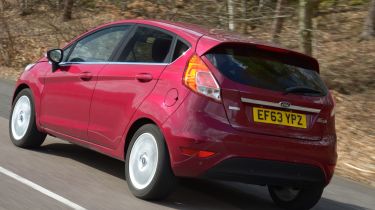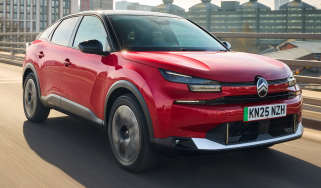Used Ford Fiesta (Mk6, 2008-2017) – How much will it cost?
The Fiesta is affordable to buy, while its efficient engines, good reliability and affordable servicing mean it won’t cost much to run
It was great value when new, but the Fiesta arguably makes an even better buy used. There are plenty to choose from, plus it doesn’t hold on to its value as well as some rivals, meaning prices are low. A range of efficient engines makes it affordable to run, while almost every garage in the land can undertake maintenance, so repairs and servicing won’t cost the earth.
Prices
Although it wasn’t the cheapest choice when new, heavier-than-average depreciation means that the Fiesta is a great-value used choice. Better still, there are plenty to choose from, thanks to the Ford’s status as Britain’s best-selling car for the past decade.
Post 2013 facelift cars are the most desirable and fetch the highest prices, thanks to the availability of the excellent EcoBoost engines and improved infotainment. You’ll pay the most for the high-performance ST, while the limited-run ST200 has become collectable and is likely to only go up in value.
Fuel economy and CO2 emissions
A supermini should be cheap to run, and happily the Ford Fiesta doesn’t disappoint in this area. For those seeking the best possible fuel economy, the Fiesta Econetic fitted with the 1.5-litre TDCi diesel engine is the star turn, with CO2 emissions of just 82g/km and combined fuel economy of more than 85mpg. That said, be wary of overall running costs because the Econetic badge carries a premium, while Ford claims every diesel Fiesta is capable of more than 75mpg.
Used - available now

2023 Audi
A3 Sportback
19,678 milesManualPetrol1.0L
Cash £17,324
2024 Audi
A3 Sportback
30,795 milesManualPetrol1.5L
Cash £19,750
2024 Audi
A3 Sportback
17,333 milesManualPetrol1.0L
Cash £18,811
2021 Mercedes
A-Class
41,806 milesAutomaticDiesel1.5L
Cash £16,051Given that the majority of small hatchbacks like the Fiesta are used for short journeys, the 1.0-litre EcoBoost petrol will be a sensible bet for most. Of course, go for a car registered before 1 April 2016, and if it has emissions below 100g/km, it qualifies for free road tax. Both the 98bhp and 123bhp engines emit 99g/km CO2, ST-Line models with 138bhp push this up to 104g/km.
The 79bhp version of what is basically the same engine sits at the other end of the scale. It matches the 98bhp EcoBoost for running costs, but we'd recommend spending the additional £500-odd to step up in power, where the engine has to be worked less hard.
If you must have the 1.25-litre, then it's worth bearing in mind that it can't compete with the 1.0-litre units for efficiency. Both the 59bhp and the 81bhp versions emit the same 122g/km of CO2 and claim to return 54.3mpg at the pumps.
If fuel costs are less of a concern than performance, you won’t mind the penalty that a Fiesta ST brings, with its 138g/km CO2 rating and, realistically, 35-40mpg day-to-day. As it happens, that's the same CO2 rating as the Fiesta automatic with the 1.6-litre petrol engine, meaning the convenience of having just two pedals will also hit you in the pocket.
During regular day-to-day driving you can expect to return close to 50mpg in the more frugal petrol models (ST aside, that is) and in excess of 60mpg in the diesels.
Running costs
All Fiesta Mk7s need to be serviced every 12,500 miles or 12 months. Services run minor (£146), intermediate (£191) then major (£250) for all cars, apart from the 1.6 ST which differs slightly.
All engines have a timing belt, which has to be replaced every eight years or 100,000 miles for the 1.25, 1.4 and 1.6 Duratec units. It’s every 10 years or 150,000 miles for the 1.0 EcoBoost, or every 125,000 miles for the 1.6 EcoBoost and TDCi diesels. Expect to pay £300 to have a new cambelt fitted, apart from on EcoBoost engines when it’s a massive £850 job.
The brake fluid needs to be replaced every two years – at £35 – while fresh coolant is needed every 10 years (£59).
The Fiesta carries the same warranty as all new Ford passenger cars, meaning three years/60,000 miles for mechanicals and a six-year corrosion warranty. Unfortunately that means even the newest examples are now no longer covered by any manufacturer guarantee.
Ford Fiesta insurance ratings begin at a scooter-like group 3 for the most basic model, while most fall between 11 and 12. The sporty ST-Line comes in at a slightly prohibitive 18, though that jumps all the way to 30 for the range-topping ST, reflective of its performance and desirability. In general, you'll pay a little more to insure a Fiesta than you would a Vauxhall Corsa or Hyundai i20.









